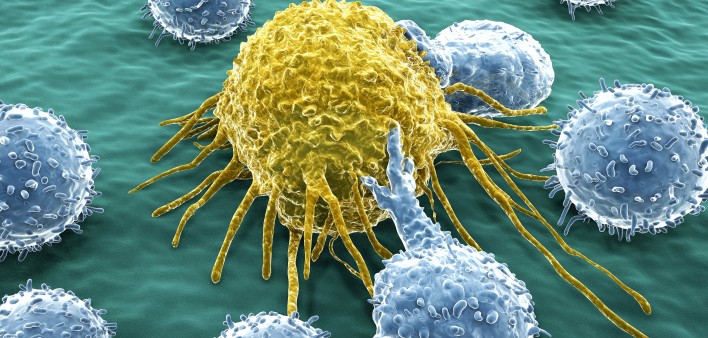People living with HIV not only have a higher rate of cancer compared with the general population, but they are also less likely to be treated for those malignancies. Recognizing this threat to the health and longevity of the HIV population, the National Comprehensive Cancer Network (NCCN) has issued new guidelines on treating cancer among them.
“The disparity in cancer care is large and significant,” said Gita Suneja, MD, of the Duke Cancer Institute and the cochair of the NCCN guidelines panel for cancer in the HIV population, in a press release. “For most cancers, people living with HIV are two to three times more likely to receive no cancer treatment compared to uninfected people. Although we don’t yet know all the reasons for these large differences in cancer treatment, the lack of clinical management guidelines available to clinicians has been shown to be one contributing factor.”
An estimated 7,760 HIV-positive U.S. residents were diagnosed with cancer in 2010, a figure that represents a diagnosis rate that is 50 percent higher than that of the general population.
The most commonly diagnosed cancers among people with HIV in order of frequency include non–Hodgkin lymphoma, Kaposi’s sarcoma (KS), lung cancer, anal cancer, prostate cancer, liver cancer, colorectal cancer, Hodgkin lymphoma, oral and pharyngeal cancer, female breast cancer and cervical cancer.
The new NCCN cancer treatment guidelines for people with HIV stress the importance of collaborative care between HIV specialists and oncologists. The document provides specific recommendations for treatment of non-small-cell lung cancer, anal cancer, Hodgkin lymphoma and cervical cancer among the HIV population. Additionally, the NCCN recently released guidelines for treating AIDS-related Kaposi’s sarcoma and B-cell lymphomas in its guidelines for B-cell lymphoma treatment.
According to the NCCN, clinicians should offer cancer treatment to most people with HIV just as they would to patients who are HIV negative. An individual’s HIV status should not be the sole reason for making any modifications to such treatment.
When determining whether there are any potential drug-drug interactions between antiretroviral therapy (ART) for the virus and cancer treatments, oncologists and HIV specialists should work together, partnering with pharmacists who specialize in these fields if possible.
“One of the most important points we want providers to be aware of surrounds the potential for drug interactions and overlapping toxicities between cancer therapeutics and ART,” said Erin Reid, MD, of the University of California, San Diego, Moores Cancer Center, who is also a cochair of the guidelines panel, in the same press release. “Some antiretroviral–cancer therapeutic combinations have serious risk of increased toxicity, while others may reduce levels of either cancer therapeutics or the antiretroviral. The good news is that with the expansion of antiretroviral combinations available, there is opportunity to minimize these risks by modifying antiretroviral therapy during cancer treatment.”
To read a press release about the cancer guidelines, which has various links to more information, click here.
To access the NCCN guidelines, click here.







Comments
Comments